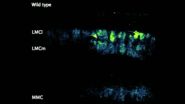(Press-News.org) As animal architects go, the average termite doesn't have many tools at their disposal - just their bodies, soil and saliva. And as guidance, variations in wind speed and direction and daily fluctuations in temperature as the sun rises and sets.
Despite such limitations, the tiny insects have managed build structures that are efficiently ventilated - a challenge that human architects still struggle with.
Led by L. Mahadevan, Lola England de Valpine Professor of Applied Mathematics, of Organismic and Evolutionary Biology, and of Physics, a team of researchers that included Hunter King, a post-doctoral fellow and Samuel Ocko, a graduate student, both in the Mahadevan lab, has for the first time has described in detail how termite mounds are ventilated. The study reveals that the structures act akin to a lung, inhaling and exhaling once a day as they are heated and cooled. The study is described in an August 31 paper in the Proceedings of the National Academy of Sciences (USA).
"The direct measurements essentially overthrow the conventional wisdom of the field," Mahadevan said. "The classic theory was that if you have wind blowing over the mounds, that changes the pressure, and can lead to suction of CO2 from the interior...but that was never directly measured. We measured wind velocity and direction inside the mounds at different locations. We measured temperature, CO2 concentrations...and found that temperature oscillations associated with day and night can be used to drive ventilation in a manner not dissimilar to a lung. So the mound 'breathes' once a day, so to speak."
Mahadevan first encountered termite mounds more than five years ago, during a visit to the National Center for Biological Sciences in India, and was surprised to learn that many of the ideas about how the mounds functioned hadn't been rigorously tested.
Working with Scott Turner, an Associate Professor at SUNY College of Environmental Science and Forestry, and author of a book that examines animal-built structures, Mahadevan, King and Ocko put together a plan to set out to find more definitive answers.
"It occurred to us that the internal flow profiles predicted by different potential mechanisms qualitatively disagree with each other," King said. "By measuring them directly, we could easily identify the right one. The hard part was figuring out how to sensitively measure these small flows in a confined space defended by glue-and-mud-excreting termites."
Using a series of custom-designed probes, King and Ocko spent several weeks in India, conducting a variety of tests on both live and dead mounds, including taking temperature readings during the day and at night, covering mounds with tarps, blowing air over them and even using vacuum cleaners to test suction.
"After months of hard thought and preparation, it all comes down to hiking through the woods at 4am with a laptop, a lantern, custom-built electronics, and a hole saw," Ocko said. "The 'aha' moment made it all worth it. "
The mechanism they identified relies, in large measure, on the structure of the mounds themselves.
The mounds are built around a large central "chimneys," which reach from gallery - the underground vault where the bulk of the colony lives - to the top of the mound. While the interior of the mound features larger, structural walls, the exterior is far thinner, with wall that, while impermeable to wind, do allow for the exchange of gases.
During the day, Mahadevan explained, as sunlight either directly or indirectly warms the mound's outer walls, the air inside warms, causing it to rise.
"What you get is a convection cell," Mahadevan explained. "The warm air can't move through the walls quickly enough, but it has to go somewhere, and the only possibility is for it to go down into the interior through the central chimney. At night, as the exterior cools, the airflow reverses, and it pulls the air up from the central part of the mound."
The end result, Mahadevan said, is that while CO2 concentrations during the day can reach up to four or five percent in the center of the mound, the airflow at night pulls the gas to the exterior walls, where it can escape by diffusing through the wall. "But what's remarkable here is how the termites are using transients. The temperature outside the mound is oscillating, and they have developed a method to harness that to ventilate their mounds." Mahadevan said.
While the study reveals for the first time how termite mounds truly work, it may also offer lessons human architects could benefit from. "In a large building like the one we're sitting in we have windows and doors that allow us a certain amount of seclusion and privacy, but that also means you have a harder time pushing air around from one part of the building to another,"
While the notion of designing buildings that can be more efficiently ventilated is not new, the principles described in the study might offer new ways to think about such passive ventilation systems.
"Could you drive large scale flows through a building like this one by cleverly opening and closing doors and windows ?" Mahadevan asked. "Rather than spending a great deal of energy for a fan and air conditioning in every room, with the end result being that some people are too hot and some people are too cold... perhaps we should think of the entire thing as a system and these new measurements suggest that if the architecture is appropriate, ventilation can occur by using environmental transients -- something for us to think about."
INFORMATION:
RIVERSIDE, Calif. -- Advance supply signals, such as financial health and production viability, contain rich information on supplier conditions. When and how these signals should be used is critical for improving firms' forecast and profitability.
A recent paper, "Dynamic Supply Risk Management with Signal-Based Forecast, Multi-Sourcing, and Discretionary Selling," provides mathematical tools and management principles on this issue.
The authors, Long Gao (from University of California, Riverside School of Business Administration), Nan Yang and Renyu Zhang (both from ...
Scientists have pinpointed a population of neurons in the brain that influences whether one drink leads to two, which could ultimately lead to a cure for alcoholism and other addictions.
A study, published in the Journal of Neuroscience by researchers at the Texas A&M Health Science Center College of Medicine, finds that alcohol consumption alters the structure and function of neurons in the dorsomedial striatum, a part of the brain known to be important in goal-driven behaviors. The findings could be an important step toward creation of a drug to combat alcoholism. ...
New research indicates that household food insecurity dramatically increases the likelihood of metabolic diseases in children, with many showing chronic disease markers before they graduate from high school. The study published today in the Journal of the American Osteopathic Association.
Food insecurity, defined as lacking access to food for an active, healthy life, is a preventable health threat. Yet, lack of basic access to food affects 14.3 percent of all U.S.
households and 19.5 percent of households with children.
"This is a looming health issue for the nation. ...
Brooklyn, NY - Xian-Cheng Jiang, PhD, professor of cell biology at SUNY Downstate Medical Center, has led a study identifying a new approach for lowering "bad" lipids in blood circulation, a critical means to combat devastating cardiovascular diseases such as atherosclerosis. The research was published in the online edition of Gastroenterology.
The team established that an enzyme called LPCAT3 (Lysophosphatidylcholine acyltransferase 3) is involved in the biosynthesis of phosphatidylcholine (PC), a type of compound lipid that is a major component of cell membranes. ...
Northridge, CA (September 2, 2015) - A study published Monday in the Journal of Health Care for the Poor and Underserved (JHCPU) concludes that ethnicity is associated with nutrient shortfalls of important nutrients. This study compared usual intake for essential nutrients between Non-Hispanic Black and Non-Hispanic White Americans using data from the National Health and Nutrition Examination Survey (NHANES), 2007-2010. This new analysis is consistent with previous research and confirms a continuing diet-related health disparity in the American population.
Nutrient shortfalls ...
LA JOLLA, Calif., September 2, 2015 - A new Sanford Burnham Prebys Medical Discovery Institute (SBP) study takes a step forward in understanding how similar, yet genetically unrelated neurodegenerative diseases, such as Alzheimer's disease, frontal temporal dementia, and progressive supranuclear palsy (PSP) are caused by the protein tau. The findings, published today in Neuron, create new opportunities to target this key protein that leads to the brain lesions found in patients with impaired motor functions and dementia.
"Our research shows how the abundance of a protein ...
Intentional burning in tropical forests has accounted for nearly 20% of all greenhouse-gas emissions since preindustrial times and will have major implications for Earth's climate and biodiversity in years to come. To better understand the complex dynamics surrounding these fires, a team of researchers led by Jennifer K. Balch, of the University of Colorado-Boulder, conducted a six-year controlled burn experiment in an Amazonian rainforest block located in Mato Grasso, Brazil. The results are described in an article that is part of BioScience's just-released Special Section ...
LA JOLLA--When you're taking a walk around the block, your body is mostly on autopilot--you don't have to consciously think about alternating which leg you step with or which muscles it takes to lift a foot and put it back down. That's thanks to a set of cells in your spinal cord that help translate messages between your brain and your motor neurons, which control muscles.
Now, for the first time, researchers have created a method to watch--in real time--the activity of those motor neurons. The new technology, developed by Salk scientists and published in Neuron, is ...
Georgia Institute of Technology researchers have developed a new artificially intelligent system that crowdsources plots for interactive stories, which are popular in video games and let players choose different branching story options.
With potentially limitless crowdsourced plot points, the system could allow for more creative stories and an easier method for interactive narrative generation. Current AI models for games have a limited number of scenarios, no matter what a player chooses. They depend on a dataset already programmed into a model by experts.
Using ...
Tropical Storm Fred is losing its punch. Satellite imagery shows that there are no strong thunderstorms developing in the tropical storm indicating that the storm is weakening.
The RapidScat instrument that flies aboard the International Space Station measured Tropical Storm Fred's winds on September 1 at 4 a.m. EDT. RapidScat saw that the strongest winds tightly circled the center and were on the northern side of the storm, as strong as 24 and 27 meters per second (53.6 mph/ 86.4 kph and 60.4/97.2 kph).
On September 1 at 13:00 UTC (9 a.m. EDT) the MODIS instrument ...

